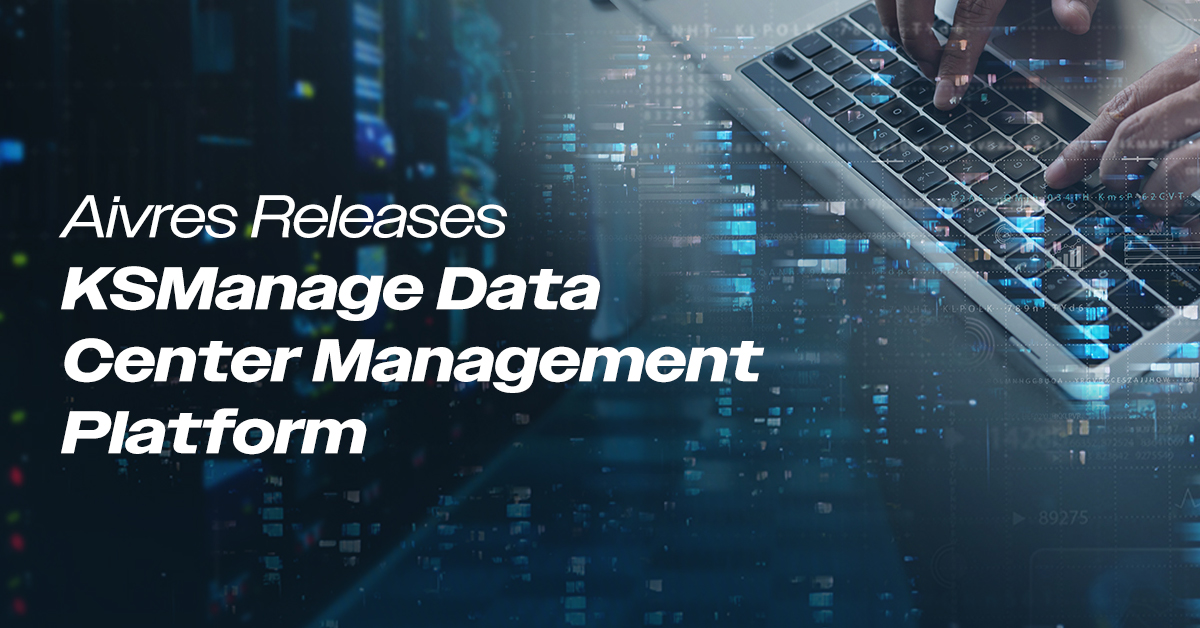Aivres Releases KSManage Data Center Management Platform

KSManage Provides an Intelligent O&M Full Lifecycle Solution for AIOps in Data Centers
SAN JOSE, Calif.—February 1, 2024— Aivres, a leading global data center and cloud computing solutions provider, announced the launch of the KSManage data center management platform to enable intelligent, efficient operations and management in data centers driving advanced applications like Large Language Models, real-time analytics, scientific simulation, and database management.
Designed specifically for industry data centers, KSManage features include comprehensive full-lifecycle asset management, intelligent monitoring, precise fault diagnosis, automated deployment management, and advanced energy management tailored for the dynamic environments of modern data centers. It provides unified management of cloud-based edge data center servers, storage solutions, networks, and dynamic environment monitoring equipment. It has robust reporting analysis capabilities with various development modes to adapt to diverse requirements. This solution can significantly boost operational efficiency for clients, reduce operational costs, and ensure the secure, reliable, and stable operation of data centers.
Automated operation and maintenance throughout the entire lifecycle with 90% increase in asset management efficiency
Growing compute requirements by AI applications like Large Language Models lead to the expansion of data centers and greater challenges for operation engineers. As data centers deploy an increasing number of devices and applications, it becomes necessary for multiple departments to collaborate on tasks such as influx, installation, inventory, and maintenance of a large number of IT equipment. In addition, the data silos between departments introduce new challenges, making the workflow extremely complex. The complexity and scale of the data center continue to increase, intensifying the challenges in data center operations and IT asset management.
Regardless of the size of the data centers, operation engineers are eager for an efficient operational method to address complex challenges. KSManage offers a broader range of centralized asset management capabilities, both online and offline, making it easier to manage over 400 different brands and types of assets. KSManage features four sub-systems and six functional modules to address all these disparate data assets. For example, the intelligent IoT asset management subsystem, powered by unique RFID and IoT technologies, automates both online and offline asset management. The subsystem breaks down the barriers between data center operation and management and integrates IT procurement, application, auditing, and financial business processes, reducing operational workload by 40% and improving asset management efficiency by 90%. It ensures comprehensive traceability and management of assets, assisting users in real-time tracking asset location, status, ownership, and related information.
Transitioning from passive operations to proactive alerts with a fault diagnosis rate over 98%
Many data centers currently have over 100,000 devices, leading to a significant increase in the workload of IT operations and maintenance. This includes numerous repetitive tasks, such as manual alerts and repairs. Ensuring business stability and continuity of business operations when dealing with such a massive number of devices has always been the top priority. Addressing potential risks in advance through precise fault warnings, predictive maintenance, and other methods enhances the continuous stability of equipment in the data centers. These measures can free operation and maintenance personnel from manual alerts and repair tasks, improving the efficiency of data center operations.
One key feature of KSManage is AIOps (Artificial Intelligence for IT Operations). Through intelligent response processes and data-driven decision-making support, KSManage is capable of uniformly analyzing 100,000+ and over 100 million monitoring indicators. It swiftly and accurately pinpoints faults, with a fault diagnosis rate exceeding 98%. It also effectively addresses the problem of system fault tolerance in the event of occasional hardware failures. The drive fault prediction can detect risks 15 days in advance, and the accuracy of memory fault prediction has increased by 30%.
In addition, it integrates AI algorithms for performance and capacity prediction. The platform employs the innovative ETF threshold-free alarm algorithm, enabling alarms for server cluster performance and capacity without set thresholds, achieving an alarm accuracy rate of 95.26%. This ensures a precise allocation of computing power. AIOps not only significantly improves the stability and reliability of core business operations but also offers capabilities like proactive intelligent stop-loss and fault location. This transition from passive response to proactive, intelligent prevention unlocks new value and cost reductions in data center operations.
Integrating the data center’s environmental monitoring and energy management to reduce energy consumption by up to 20%
New applications like artificial intelligence and big data are driving steep demands in computing power. Advances in semiconductor technology have led to increased power consumption per core in chips, and the data center has become a major consumer of electricity. Efficient resource scheduling is key to maximizing the utilization of computing power, while enhanced energy management lowers the power consumption and operational cost of data centers.
KSManage provides a wide range of power control strategies integrating the energy consumption data of various devices and IT equipment, including air conditioning, lighting, power supply, fire protection, access control, as well as server equipment, switches, storage, and other devices. By analyzing the data center’s carbon footprint in real-time, KSManage can detect emissions from specific server rooms and racks, enabling the evaluation, tracking, and management of carbon emissions from particular business sections. With these results, the system can analyze overall space utilization within the data center and offer insights for the installation and removal of servers to optimize rack density. Moreover, real-time analysis of the data center’s carbon footprint, based on energy consumption, aids in improving space utilization and reducing energy consumption by 15-20%, significantly lowering the PUE of the data center.
